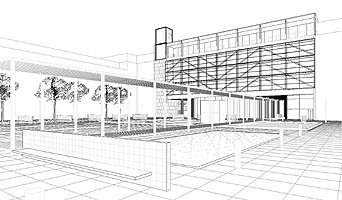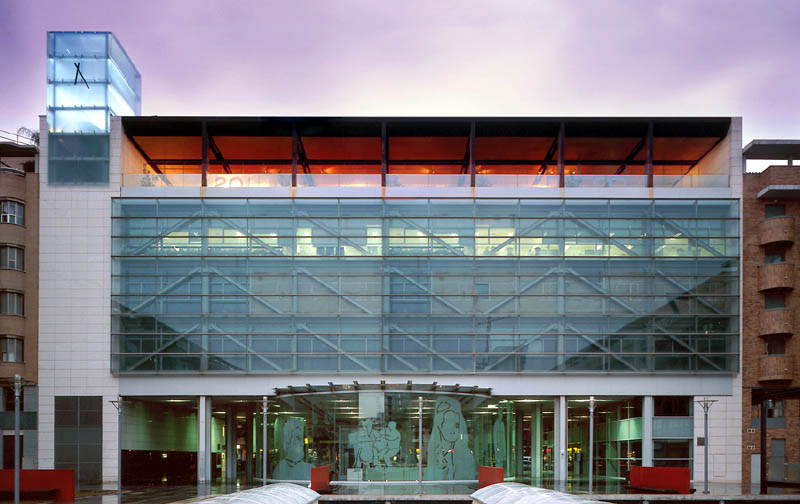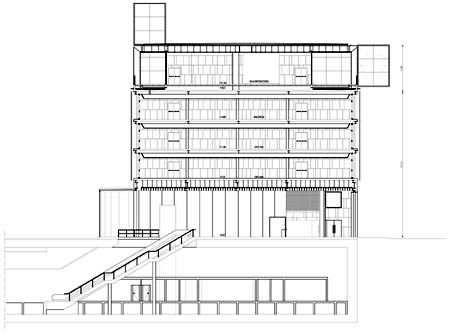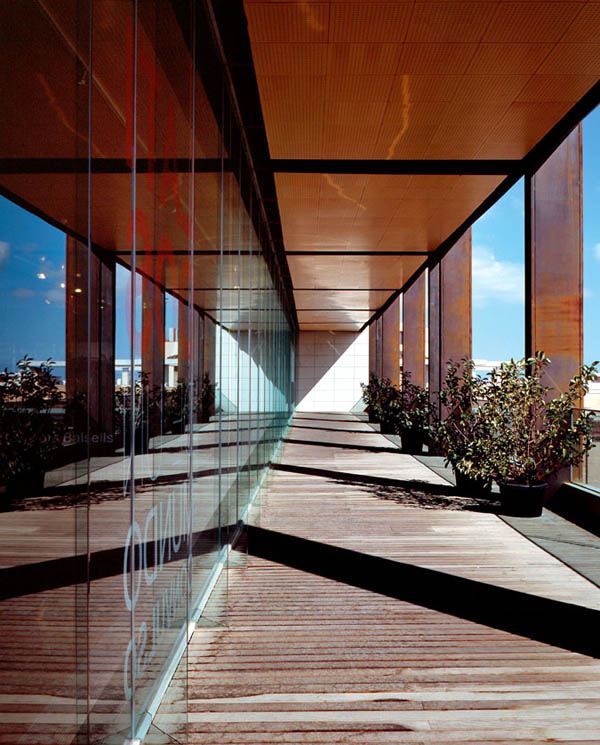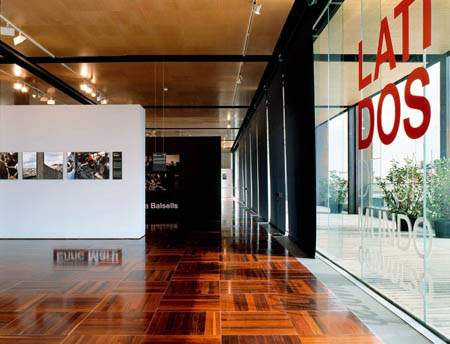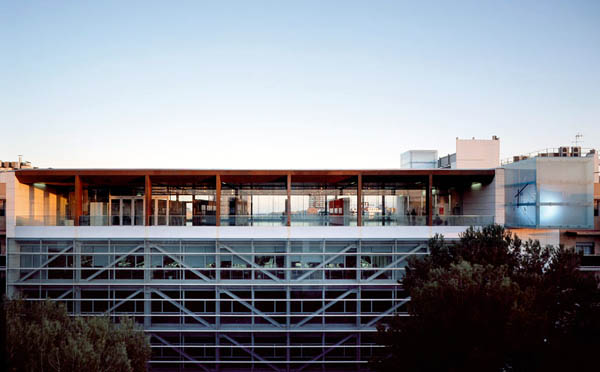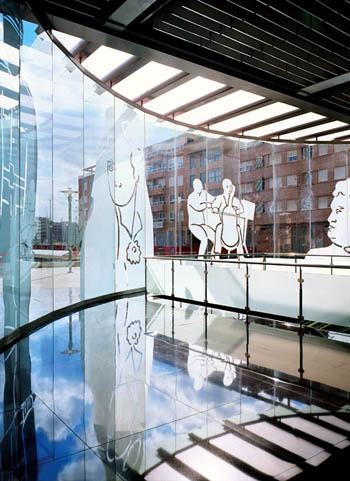| La
“Avinguda del País Valencià” de Torrent es el eje que ha cumplido el
papel estructurante de la formación urbana en el siglo pasado. Apoyado en
él, el centro de gravedad poblacional ha ido desplazándose, subiendo de
cota topográfica y alejándose del casco histórico en cuyo borde Noreste
se encuentra la antigua estación del tren de vía estrecha. Como
consecuencia de este desajuste entre la masa de población y los recursos
ferroviarios se añadió a la red una nueva estación: un elemento más de
los que hacen de la “Avinguda” el nervio de la ciudad.
La traza en curva prevista para el
ferrocarril es decisiva en la configuración del proyecto y nos obliga a
trabajar con una estructura que en planta baja tiene luces de 24 metros y
soporta cuatro plantas de uso público: oficinas, biblioteca y sala de
exposiciones. Esto se traduce en la adopción de una estructura metálica
formada por pórticos de vigas reticulares cuyo canto es el del cuerpo
principal del edificio, esto es: tres plantas. Los soportes
cruciformes en planta baja así como las barras inclinadas de las vigas
definirán de forma acusada la imagen del conjunto.
La comunicación entre dos
elementos urbanos tan destacados en la trama urbana de Torrent como son la
“Avinguda” y la Plaza de la Unió se hace a través de un espacio
cubierto que contiene un elemento de gran dimensión de traza cilíndrica
elíptica, formado por vidrios laminares tomados a hueso con siliconas
estructurales sobre los que se produjo la intervención plástica de
Carmen Calvo, que concibió una narración de personajes anónimos
dibujados al chorro de arena, tratados fragmentariamente y con escala
urbana propia de espacios abiertos. En él se alojan los servicios
auxiliares característicos, como validadoras, accesos, etc.
El proyecto se compone del cuerpo
principal con las oficinas y la biblioteca, coronado por un ático en el
que se ubica la sala de exposiciones y con todo su basamento vacío que
alberga el acceso a los andenes de la estación. Un cuerpo vertical
compacto y cerrado con caliza blanca acoge accesos, servicios generales e
instalaciones y soporta los cubos vidriados de identificación, con sendos
relojes, cuyas posiciones -vertical u horizontal- responden a la más
adecuada visión: lejana y frontal.
|
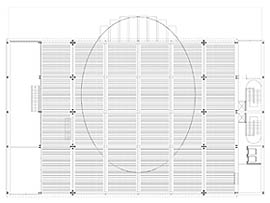
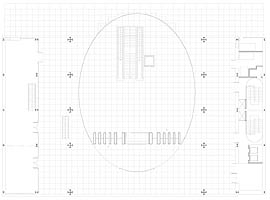
|
|
The Avinguda del País Valencià is the axis
which structured the urban expansion of Torrent in the 20th century. The
centre of gravity of the town gradually shifted along it, climbing away from
the old town centre with the narrow-gauge railway station on its
north-eastern edge. The resulting imbalance between the bulk of the
population and the railway link has led to the network’s gaining a new
station, adding to the elements that make the Avinguda the neuralgic centre
of the town.
The curved route of the railway has been
decisive in shaping the project, making it necessary to work with a
structure which has 24 metre spans on a ground floor that supports four
further storeys of public uses: offices, a library and an exhibition hall.
The result is the adoption of a metal portal frame structure of lattice
beams with their edges forming the main body of the building, in other
words, three storeys. The cross-shaped supporting members on the ground
floor and the diagonal struts of the beams give the whole a sharply-defined
image.
Communication between two such major elements
of the urban grid of Torrent as the Avinguda and Plaza de la Unió is set up
through a covered space which contains a very large elliptical cylinder of
laminated glass panes, dry-mounted with structural silicone, with a
sand-blasted mural by Carmen Calvo, who has conceived a
fragmentarily-treated narrative of anonymous people on an urban scale
associated with open spaces. It holds the typical concourse elements such as
ticket machines, gates, etc.
The main body of the building holds offices
and the library. It is crowned by a top-floor exhibition hall and has an
empty base which houses the entrance to the platforms. A compact vertical
block sheathed in white limestone contains entrances, general services and
service installations and is surmounted by the glazed identification cubes
with their clocks, positioned vertically or horizontally for the best view:
from afar and in front.
|
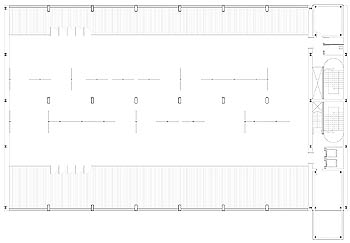
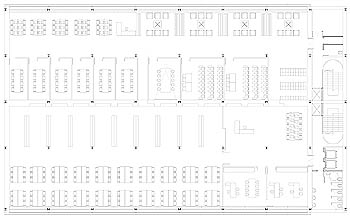
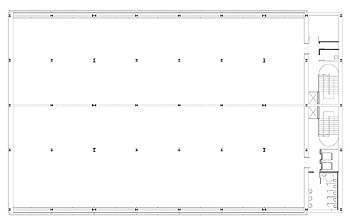
|
